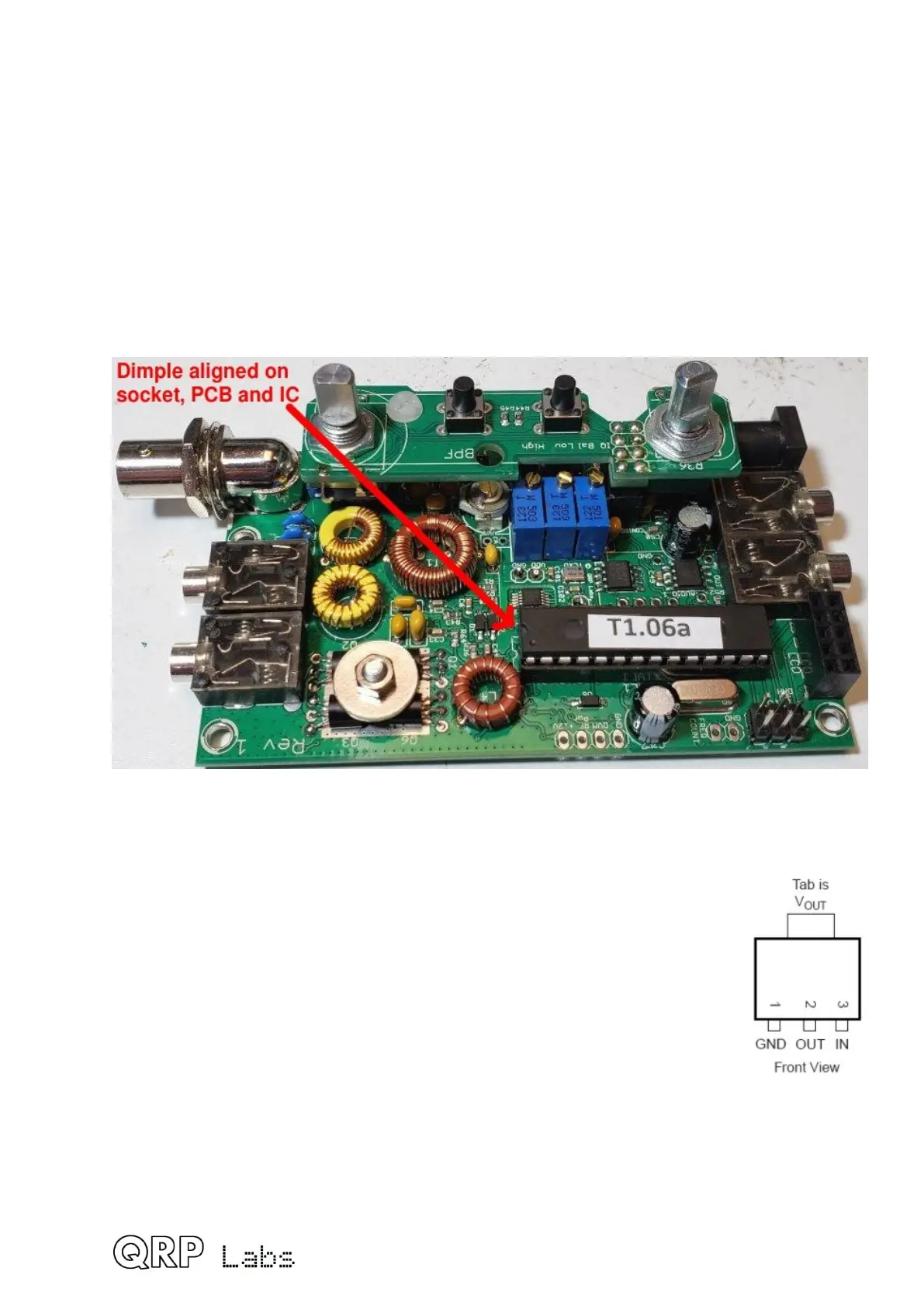3.42 Plug together the two boards
Now you can carefully plug together the two circuit boards. The best way to do this is to
concentrate on getting the 5-pin headers at the top left of the PCBs, to mate accurately with
each other. The rest should fall into place by itself.
If you have taken care particularly with filing off the rough edges of the PCBs when the
Display board panel was broken out into the sub-PCBs, then you should find that the
Controls PCB will fit perfectly (though snugly) through the gap in the Display board, and it
will be elevated 1.6mm (one PCB’s thickness) above the Display board.
Construction is now complete!
Alignment steps must be done BEFORE installation in the optional enclosure.
3.43 Connections for basic operation
The following connections are required for basic transceiver operation.
1) Power supply
A power supply is required, which needs to be able to supply up to 0.5A or a bit more, on
transmit. The supply voltage may be from 7 to 16V, and the RF power output will depend on
the supply voltage (higher output power is produced at higher supply voltages). Operation
much above 5W output is not recommended and could lead to overheating and destruction
of the final amplifier. In most cases 13.8V is sufficient and 16V produces way too much
power output.
A 2.1mm DC connector plug is required; the center pin is + and the barrel is ground
(negative).
2) Earphones
The earphones can be any stereo earphones such as commonly used with audio
equipment, mobile phones and so on, with a 3.5mm stereo jack plug. These commonly
have a 32-ohm impedance. Some people have noted unstable audio operation when low
67
